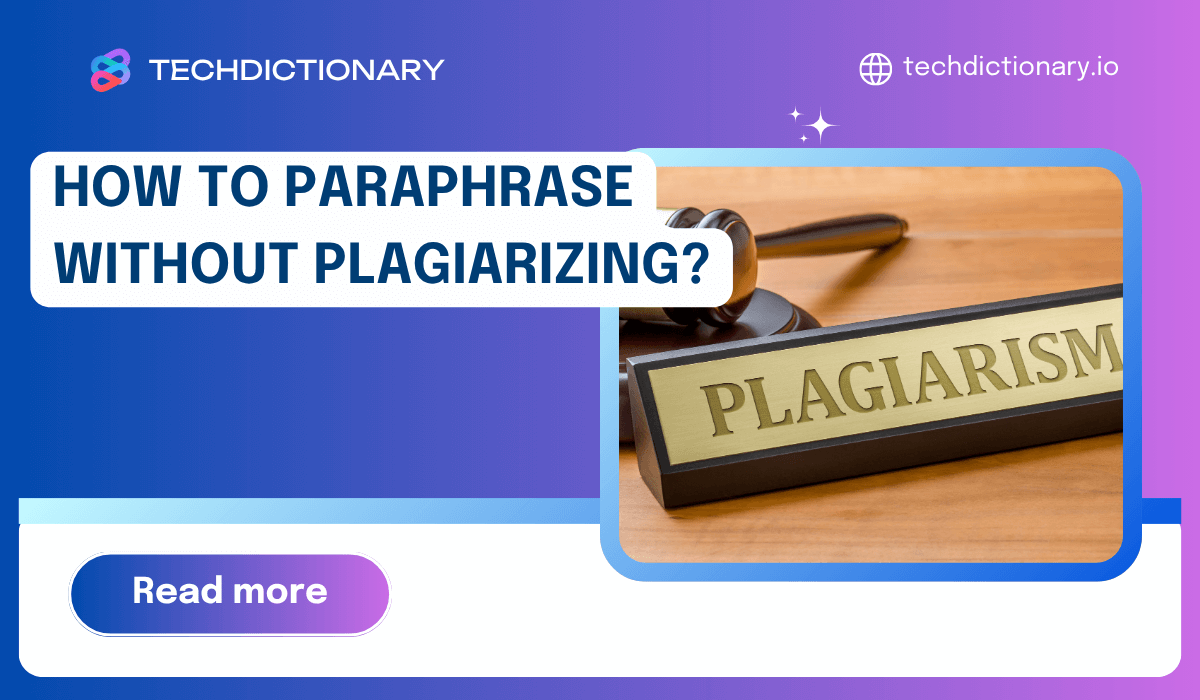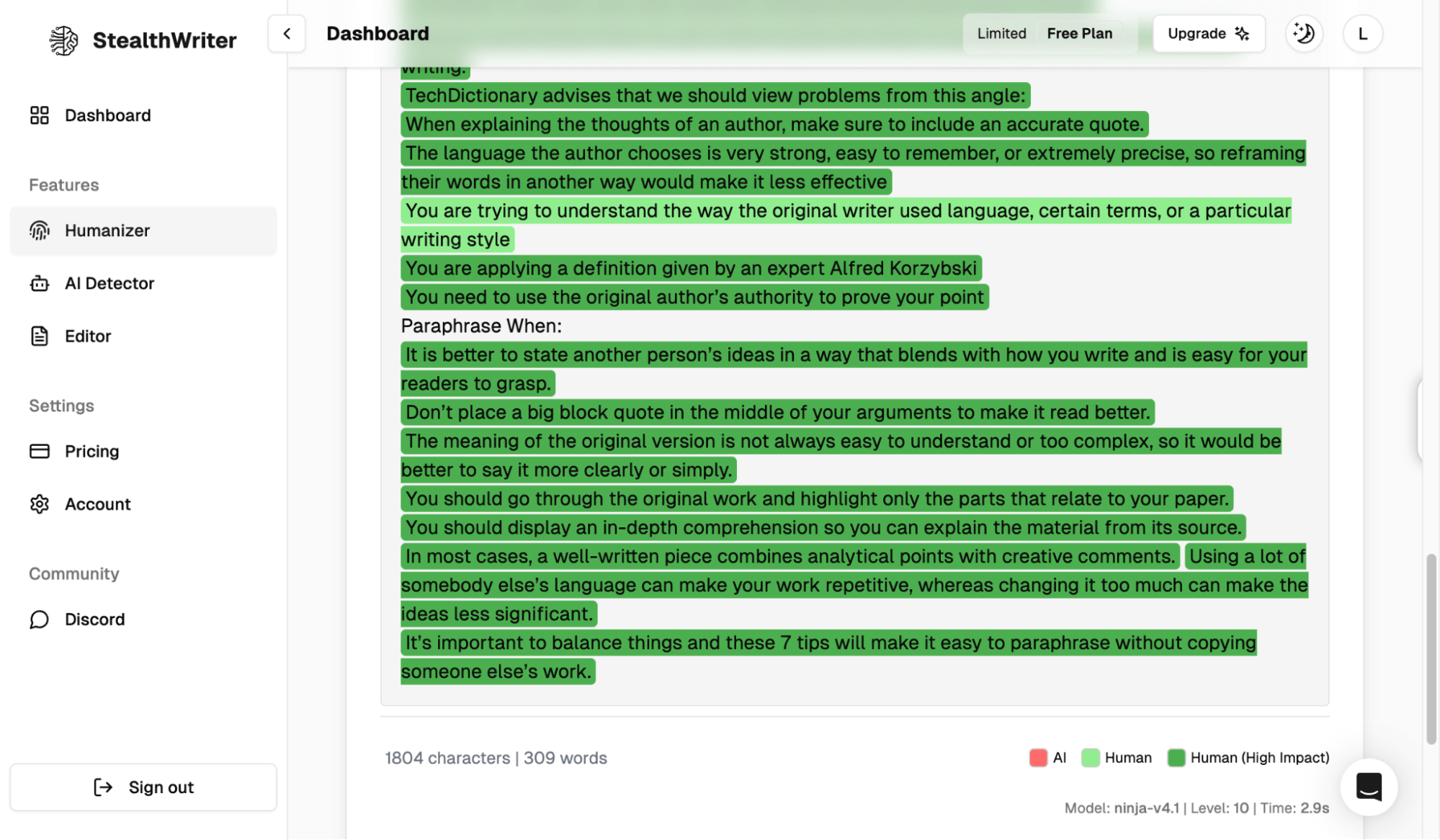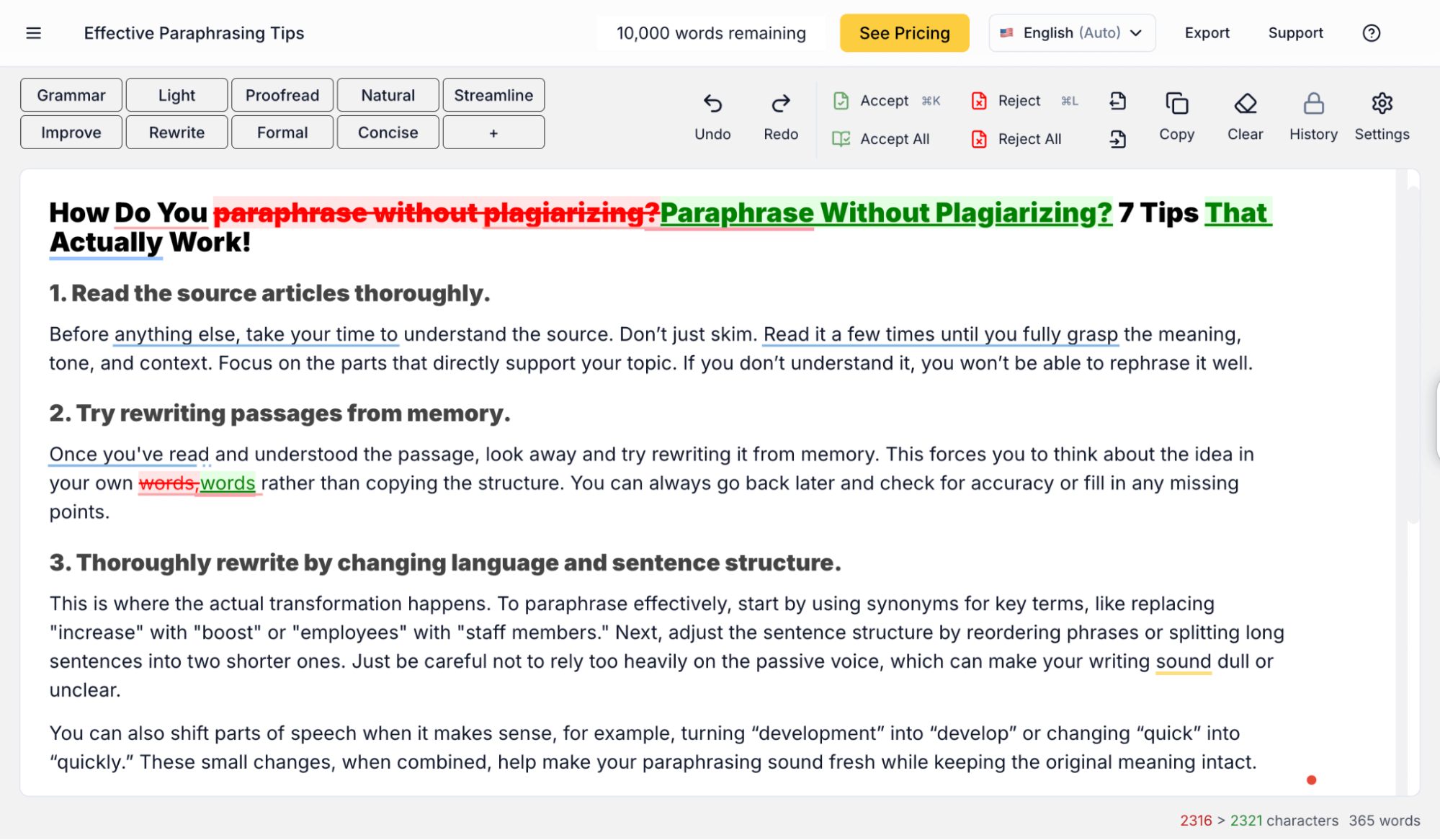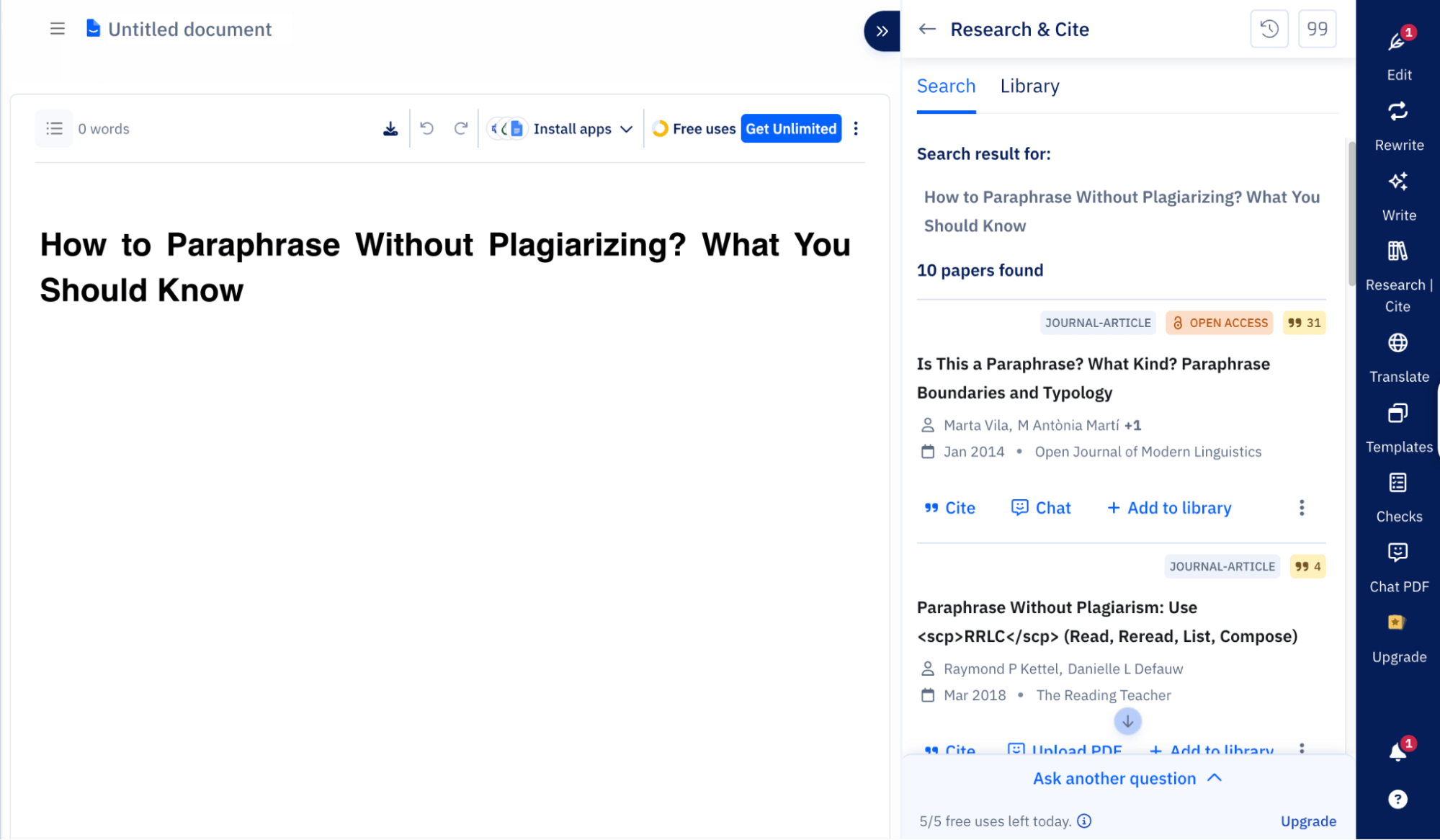
Have you ever wanted to use someone else’s idea without getting in trouble for copying it?
That’s where paraphrasing comes in. When done right, it lets you share those insights in your own words and style, all while staying clear of plagiarism.
In this guide, TechDictionary walks you through how to paraphrase without plagiarizing. You’ll get easy tips, clear examples, and even some handy AI tools to help you out. Whether you’re writing a school paper, a blog post, or content for work, this skill is a must-have. Let’s dive in!
So, you’ve found a solid source that backs up your point. At TechDictionary, we offer two ways to use someone else’s idea properly:
Let’s look at a few examples to highlight the difference between incorrect and well-paraphrased content.
| Original Text | Improper Paraphrasing | Proper Paraphrasing |
| Technology is changing education by making learning more interactive and flexible | Technology is changing learning by making it more flexible and interactive. (Too close to original) | Learning has become more dynamic and adaptable, thanks to technological advances in education. (Reworded + structure changed) |
| Sleep is essential for physical health and emotional well-being | Sleep is important for your body and feelings. (Overly simplified, lacks clarity) | Getting enough sleep plays a crucial role in maintaining both your physical health and emotional balance. |
| Climate change is one of the biggest challenges facing humanity today | One of the biggest problems people face today is climate change. (Too similar in idea and order) | Humanity is currently dealing with a major issue: climate change and its far-reaching effects on the planet. |
These examples underscore that true paraphrasing involves a deep understanding and re-expression, not just surface-level changes.
You may be interested in: Top 10+ Paraphrasing Tools To Avoid AI Detection in 2025 [We Tested Them All]
Knowing when to paraphrase and when to use a direct quote is key to strong academic writing.
TechDictionary suggests thinking about it this way:
Use a Direct Quote When:
Paraphrase When:
Generally, a strong piece of writing usually mixes both. Too many quotes can feel like copy and paste, while too much paraphrasing can lose the original impact.
Finding the right balance is crucial, and these six tips will help you paraphrase effectively without plagiarism.
Take your time to understand the source. Read it several times to grasp the meaning and tone, focusing on relevant parts. If you don’t understand it, you can’t rephrase it well.
To paraphrase effectively and change sentence structure by reordering or splitting long sentences. Avoid excessive passive voice, as it can dull your writing. You can also modify parts of speech, such as turning “development” into “develop.” These small adjustments can refresh your paraphrasing while preserving the original meaning.
Once you’ve got your draft, go back and look at the source. Is your version truly different? If the sentence flow or phrasing feels too similar, revise again. Avoid “patchwriting,” where your version just looks like a slightly edited copy.
After paraphrasing, verify that the original meaning remains intact. To avoid being flagged as AI-generated content, you can use AI Humanizer tools like Undetectable AI or StealthWriter to ensure originality while maintaining the original meaning of the text.

Undetectable AI Interface

StealthWriter Interface
Proofread your paraphrased text meticulously for clarity, conciseness, and grammatical correctness. Paraphrasing can sometimes introduce errors or awkward phrasing, so a thorough review is essential. For assistance with refining your prose and ensuring grammatical precision, tools like editGPT can be invaluable.

editGPT Interface
When paraphrasing ideas or information that isn’t common knowledge, always cite the source with an in-text or footnote citation and include a full reference. For generating accurate citations in various styles (APA, MLA, Chicago, etc.), a specialized tool like Paperpal can help.

Paperpal Interface
So, when it comes to how to paraphrase without plagiarizing, it’s all about understanding, rephrasing in your unique voice, and always giving credit! As TechDictionary has shown, it’s not just about changing a few words here and there. True paraphrasing is a skill that showcases your comprehension while respecting intellectual property. While AI tools can offer assistance in rephrasing or checking, your critical thinking and ethical commitment to citing sources are what truly count.
Want more tips like this? Follow TechDictionary for clear, useful breakdowns on writing, research, and more!

